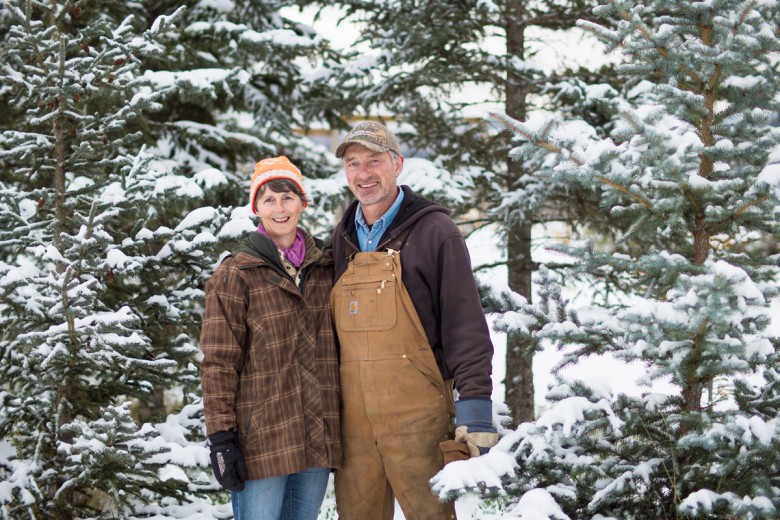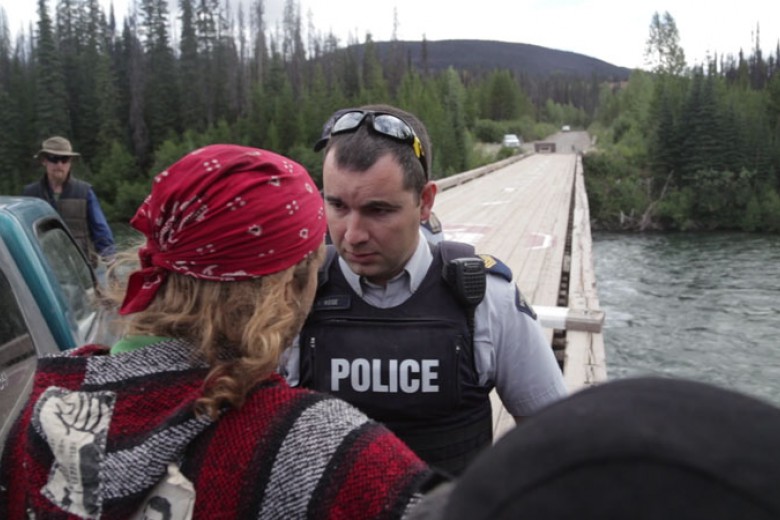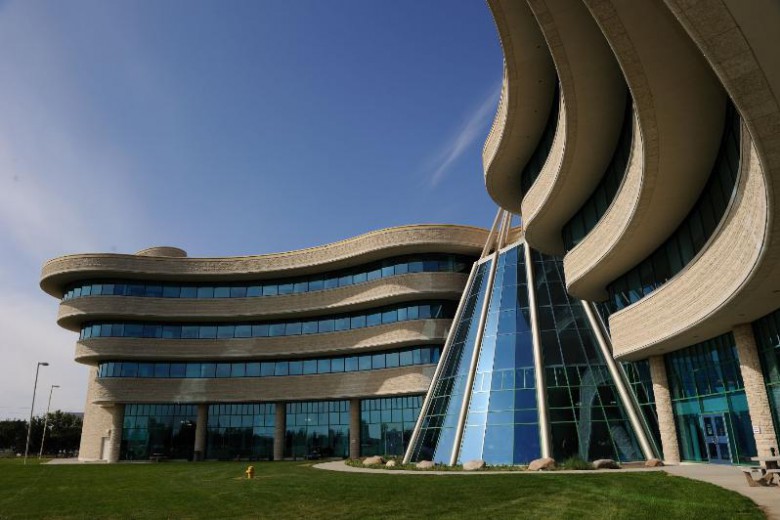By Lori Waller
June/July 2008
Fort Chipewyan, a tiny northern Alberta hamlet perched on the shores of Lake Athabasca, is historically notable as the location of the province’s oldest European settlement, a trading post opened by the Hudson’s Bay Company in 1788.
Mention Fort Chipewyan today, though, and what’s likely to come to mind for most Albertans is not the 18th century fur trade, but cancer.
The community’s residents, mostly indigenous Cree, Dene (Chipewyan) and Métis, are dying in alarming numbers from a variety of cancers and autoimmune disorders such as lupus and Graves’ disease. The situation was first exposed in 2006 when the town’s doctor, John O’Connor, went public with his findings that in this small community of 1,000, he had diagnosed at least three cases of a rare bile duct cancer that normally afflicts only one out of 100,000 Canadians.
Before going to the media, O’Connor had been trying for two years to convince the provincial authorities that something was very wrong in Fort Chipewyan. To this day, the province has taken little action, dismissing O’Connor’s concerns with a brief statistical report that found the rate of cancer in the hamlet, although 30 per cent higher than the rate for Alberta as a whole, was not statistically significant enough to be considered “elevated.” The report was heavily criticized by academics such as ecologist Kevin P. Timoney for its questionable statistical methodology and lack of peer review.
Many suspect that Fort Chipewyan’s health problems have something to do with the fact that it sits less than 200 kilometres downriver from the biggest industrial project on Earth-the wringing of oil from Alberta’s tar sands. It’s an endeavour that threatens to devastate not only the people of Fort Chipewyan, but dozens of indigenous communities throughout northern Alberta-and perhaps Canada’s entire Northwest.
*
In the area around Fort McMurray, a five-hour drive north of Edmonton, oil companies are ripping up tens of thousands of hectares of boreal forest to get at the region’s tar sands deposits. These deposits are estimated to hold about 174 billion barrels of recoverable oil-a staggering 97 per cent of Canada’s total oil reserves.
Current operations in the region are extracting about 1.2 million barrels of oil a day, a mammoth undertaking that requires digging open-pit mines 100 feet deep and draining large quantities of fresh water from the Athabasca River to boil bitumen, a thick form of petroleum, out of the sand. The bitumen is then converted to a synthetic crude oil in special heavy-oil upgraders, sullying the air with nitrogen oxides, sulphur dioxide, volatile organic compounds, and other known carcinogens.
Waste water and toxic tailings from the mines are pumped into massive reservoirs that collectively cover more than 50 square kilometres. Flanking the river-a mere 150 feet from the bank in some places-these “tailings ponds” contain a toxic brew of naphthenic acid, trace metals, and other pollutants. The ponds are so highly toxic that birds die upon landing on the water-as nearly 500 ducks did this April, when sonar devices intended to scare away birds failed at the Syncrude site.
There have been several leaks of oil and tailings into the river since the 1960s, when Suncor began excavating the first mine. This company admitted in 1997 that its tailings pond was then leaking approximately 1,600 cubic metres of toxic fluid a day into the Athabasca River, the largest freshwater delta in the world. According to Canada’s National Energy Board, tailings ponds are linked to “the migration of pollutants through the groundwater system and the risk of leaks to the surrounding soil and surface water… . The scale of the problem is daunting and current production trends indicate that the volume of fine tailings ponds produced by Suncor and Syncrude alone will exceed one billion cubic metres by the year 2020.”
*
The damage already caused by tar sands pollution “could actually be worse, in some respects, than the Exxon Valdez,” says Jeffrey W. Short, a researcher with the Alaska Fisheries Science Center who has studied the infamous 1989 spill, which dumped 11 million gallons of oil off the Alaska coast. As Dr. Short explained to journalists in November of last year, contaminants leaking from the tailings ponds can travel quite quickly throughout the oil-soaked sand that forms the river’s banks, making contamination of the river water highly likely.
The impact of this seepage on the region’s ecosystems is predictable, and quite visible to those who know the environment most intimately. Fort Chipewyan’s indigenous people, who rely heavily on fish as part of their diet, have been noticing decreasing fish populations for several years. They report that the fish they do catch are often deformed, covered with lesions and tumors, or have bizarre mutations. Their flesh, sometimes so soft that you can poke your finger through it, is said to smell like burning plastic when it’s fried in a pan.
A study recently commissioned by the region’s health authority puts chemical names and numbers to the contamination of the Athabasca River. Drawing water and sediment samples from Lake Athabasca, into which the river of the same name drains, researcher Kevin P. Timoney found elevated levels of several known toxins and carcinogens. Arsenic, mercury, and several polycyclic aromatic hydrocarbons were all present in levels “sufficiently high to present a risk to either humans or wildlife.” The report warned that a pregnant woman eating walleye from the lake would consume, on average, 22 times the maximum amount of mercury recommended by the World Health Organization.
While all residents in the region of tar sands mines are exposed to health risks from the massive industrial development, it is the indigenous people of the area whose health is most at risk due to their traditional reliance on fish, moose, cattail, and other “country” foods. Many of the toxins and carcinogens released in the mining process are known to bioaccumulate, or become increasingly concentrated in the flesh of animals as they travel up the food chain. The people of Fort Chipewyan are particularly vulnerable because pollutants travelling down the Athabasca River tend to settle in the fine sediment of Lake Athabasca, where they hunt and fish.
*
Leaders of Fort Chipewyan’s two First Nations, the Mikisew Cree and Athabasca Chipewyan, have recently joined 55 organization across Alberta in calling for an immediate moratorium on any approvals for new tar sands extraction projects. At a rally held last August, Chief Roxanne Marcel of the Mikisew Cree First Nation said: “Our message to both levels of government, to Albertans, to Canadians and to the world, who may depend on oil sands for their energy solutions, is that we can no longer be sacrificed.”
Sacrifice is an apt term. For these indigenous communities, hunting and eating wild fish and game represents a significant source of nutritional sustenance and a core element of their spiritual and cultural identity. By destroying the region’s fragile ecology, uncontrolled industrial expansion endangers both the bodies and the cultures of indigenous people.
This is, of course, a sacrifice Canadian governments and companies have been all too willing to make, time and time again, throughout the history of this country. The story of indigenous cultures being destroyed, and of indigenous people bearing the brunt of industry’s “toxic load,” is repeated with nearly every mining operation, hydro-electric dam, and clear-cut forest that our voracious economy forces onto the landscape.
The destructive nature and scale of the tar sands operations, and the staggering number of First Nations communities that will be affected by them, make this an industrial project of nightmarish dimensions. The three mines currently operating around Fort McMurray are merely a modest preview of the development yet to come: by 2015, companies are aiming to nearly triple the current rate of production to 3 million barrels a day. By 2030, the goal is 5 million barrels.
*
The tar sands deposits underlie 149,000 square kilometres of land in three regions: Athabasca, Peace River, and Cold Lake. That’s an area larger than the state of Florida, and nearly one third of it, 54,000 square kilometres, has already been leased for development in Alberta. On top of or adjacent to those lands are more than two dozen First Nations, some already touched by tar sands extraction. Most are covered by Treaty Eight, which was signed in 1899, on the heels of a previous mining frenzy-the gold rush. Treaty Eight affirmed the Métis and First Nations’ rights not only to reserve lands and monetary compensation, but also to the continued pursuit of traditional hunting, trapping, and fishing practices. These rights have been steadily eroded by the expansion of the tar sands development.
The erosion of traditional means of self-sufficiency has led some First Nations in the area to seek to benefit from the tar sands development. Fort McKay First Nation, which is located less than 55 miles from the three existing mines, has emerged as a willing, if reluctant, participant after years of resistance. The first two mines, owned by Suncor and Syncrude, were established in the 1960s without the consultation or consent of the Fort McKay First Nation. At first, says Chief Jim Boucher, the community fought further development by launching legal challenges in the 1970s that successfully blocked Petro-Canada, Gulf, and Shell from setting up camp in the area. But then, in the 1980s, the fur market that had employed Fort McKay’s trappers collapsed, and many became dependent on welfare. Realizing that they were already surrounded by mines that would slowly erode the populations of wildlife they hunted for subsistence, community leaders felt they had no choice but to turn to the tar sands.
In 1986, the Fort McKay Band Council formed the Fort McKay Group of Companies, which now pulls in millions of dollars of revenue each year from businesses that service oil companies with everything from heavy equipment to workers’ camps. The band council is also in discussion with oil companies about extracting the 600 million barrels of bitumen that lie under their reserve. Fort McKay is rumoured to be the richest First Nation in Canada. “This community’s success is completely dependent on oil sands development,” says Boucher. “That’s the only option.”
A similar route has been taken by the band council of the Buffalo River First Nation, located just across the provincial border to the east, where the Cold Lake deposit extends into Saskatchewan. In May of 2007, the council signed an agreement with Access Energy allowing oil exploration on their reserve and traditional use lands in exchange for a position as equal partners in the project and the company’s commitment to invest in social infrastructure in the community.
*
Other First Nations, however, are in active opposition to tar sands development on or near their lands. The Woodland Cree, located near the Peace River deposit in northwestern Alberta, are suing the Alberta government in an attempt to block an eight-fold expansion of Shell’s Carmon Creek project. The project’s main processing plant is less than 10 kilometres from the band’s main reserve at Cadotte Lake.
The nearby Lubicon Cree are fighting a Signet Energy and Deep Well Oil & Gas project that would see 350 to 500 oil wells drilled near the 247-square-kilometre parcel of land identified by the provincial and federal governments as future reserve land for the Lubicon.
Regardless of the position they take on specific projects, however, nearly all the First Nations in the area have expressed concern about the pace of development, the lack of consultation, and the regulatory vacuum created by an approvals process that considers every project on a stand-alone basis and never takes into account the cumulative environmental effects of all projects combined.
In February, chiefs representing the nations covered by Treaties Six, Seven and Eight in Alberta unanimously passed a resolution calling for a moratorium on all new tar sands approvals “until Treaty First Nations have approved a comprehensive watershed management plan and resource development plan for the region.”
Beyond the areas where the bitumen will be extracted, tar sands developments will also affect First Nations as far as the Northwest Territories and the B.C. coast.
More than 1,000 kilometres of pipelines are being planned to supply the energy-intensive tar sands operations with natural gas from the north, and more pipelines are required to bring crude oil from Alberta to refineries and markets in Asia and the United States. The Mackenzie Valley pipeline, a project that has been on the drawing board for decades, is designed to bring natural gas from the Northwest Territories community of Inuvik, on the Beaufort Sea, to Alberta, with the majority of the gas likely to be fed into the tar sands operations. The pipeline will open up the Arctic to natural gas drilling, bringing roads, wells, a transient workforce, and other ecologically and socially disruptive elements to what is now largely undisturbed boreal forest and tundra.
Pipeline ruptures and leaks are a serious concern, as the pipes will be buried under permafrost that is increasingly melting due to climate change. The area affected by the pipeline is home and hunting territory to four First Nations-the Inuvialuit, Gwich’in, Sahtu, and Dehcho-with a combined population of about 15,000 people.
Then there are the dozens of First Nations in British Columbia, none of whom have surrendered their lands through treaties with the Crown, that are likely to become unwilling hosts to Enbridge’s Gateway Pipeline, meant to carry oil from Alberta tar sands operations to Kitimat on the west coast for export. If built, the pipeline will cross over 1,000 lakes, streams, and rivers in B.C. alone and cut across the traditional territory of well over 10,000 indigenous people. Still more First Nations land all along the northern coast of B.C. would be endangered by oil tanker traffic, which has already increased as natural gas condensate headed east towards the tar sands operations is brought into Kitimat. Critics say that catastrophic oil spills are inevitable should heavy tanker traffic be allowed off the coast.
The race to develop the tar sands is set to dramatically transform the lands of Canada’s entire Northwest. Inevitable damage to ecosystems and wildlife will endanger the subsistence hunting and fishing cultures of tens of thousands of indigenous people in Canada. The struggle to stem the growth of tar sands operations-and to develop much higher standards of pollution control for those already in operation-is a project of crucial importance in this country that has sacrificed indigenous people in the name of economic development for too long.
Lori Theresa Waller is an Ottawa-based writer who travelled throughout Alberta last summer to learn about the effects of tar sands developments.






